Macroeconomic metrics – How to find Gross Domestic Product (GDP) and Gross Value Added (GVA) data
14/08/2025

There is a wealth of information on a range of global macroeconomic topics within our Library resources. This information ranges from statistics and reports to forecasts, insight, analysis and metrics. Two commonly used macroeconomic metrics are Gross Domestic Product (GDP) and Gross Value Added (GVA). They both measure the value of goods and services produced over a given period. GDP is a national level measure; GVA can be collected at entity, region, industry or sector level.
- Gross Domestic Product can be used as a measure of the health of a nation’s economy over time and it can be used to compare the economies of different nations.
- Gross Value Added can be used as a measure of the value to an economy of a single entity, region, industry or sector, for example manufacturing within the United Kingdom.
Of the resources listed on our Economic data and analysis page , we recommend Passport as the best place to start your search for information regarding GDP or GVA. For GVA specifically, Passport has the most comprehensive coverage.
Finding Gross Domestic Product (GDP) within Passport
1. From the headings at the top of the screen, choose ‘Economies’ and then ‘Economy, Finance and Trade’.
2. From the drop down select GDP and Go.
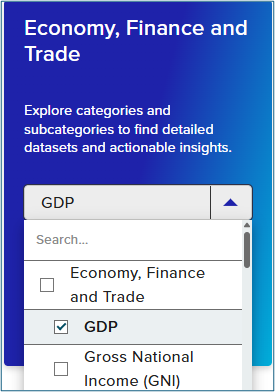
3. Check that the +GDP radio button is selected and then go to the ‘Select geographies’ tab
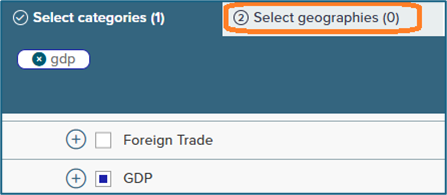
4. Use the menu or the search box to find the nation of interest.
5. To see the results of your search, click the radio button next to the nation of interest – in the screenshot below the United Kingdom has been selected – and then click on ‘View results’, top right.

6. On the next screen, choose ‘View full data set’
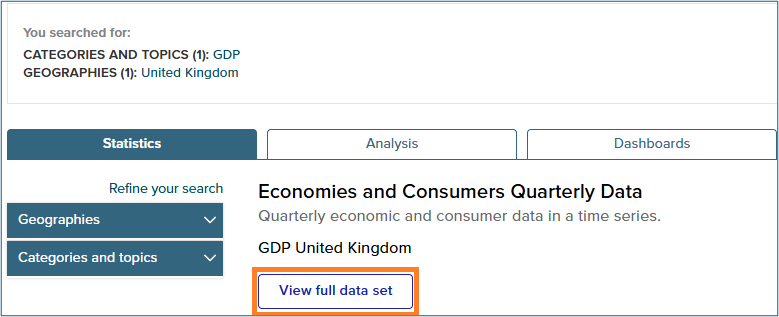
7. On the data set screen, it is usually possible to modify the currency and date range displayed. The data can also be downloaded.

Finding Gross Value Added (GVA) by sector within Passport
Follow steps 1-2 above and then…
3. On the next screen, start expanding the menus using the + signs and the radio buttons. Look for + GDP, +GDP (Production Approach), +Gross Value Added
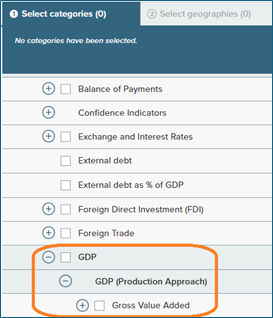
4. Continue using the menus and the + signs until you find the sector in which you are interested and then click the relevant radio button.
In the example in the screenshot below ‘GVA from Mining and Quarrying; Manufacturing; Electricity, Gas and Water Supply’ and then ‘GVA from manufacturing’ have been selected.
Notice that ‘gva from manufacturing’ has been added to the ‘Select categories’ tab. If a category that you do not wish to explore – such as GDP from the previous example – appears in that area, click on the x to remove it. Further refinement to specific manufacturing sectors such as food, textiles, wood etc. was also possible.
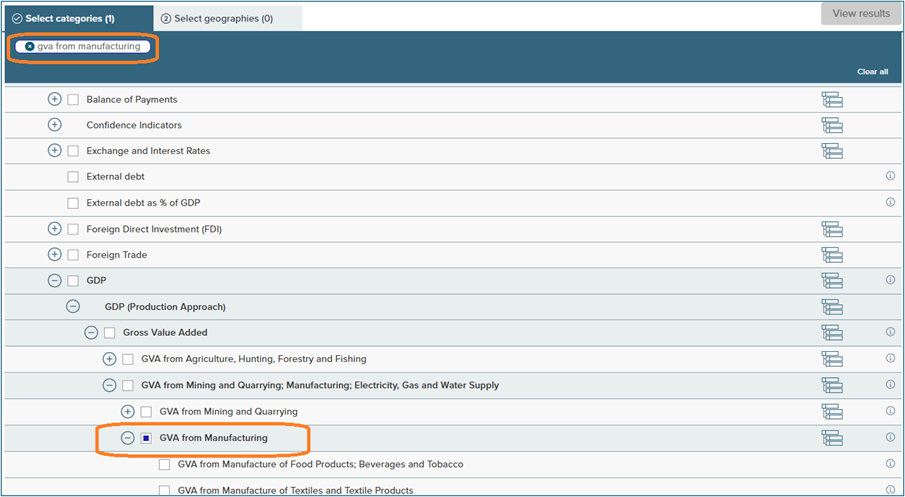
5. Go to the ‘Select geographies’ tab

6. Use the menu or the search box to find the nation of interest.
7. To see the results of your search, click the radio button next to the geography of choice and then click ‘View results’. In the screenshot below the United Kingdom has been selected.

8. On the next screen, choose ‘View Full Data Set’.
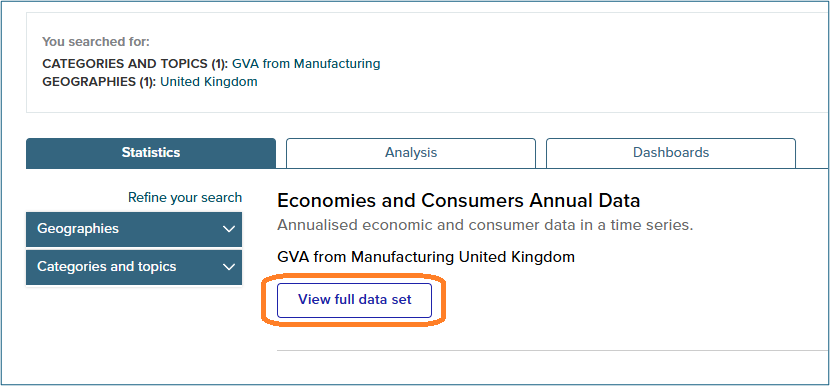
9. On the data set screen, it is usually possible to modify the currency and date range displayed. The data can also be downloaded.

GDP data, and some GVA data, is also available within Statista and BMI. We recommend using the ‘Search Statistics’ search box or the new ‘Research AI’ tool within Statista. Within BMI we recommend using the ‘Search Geography, Service and Research’ box.
If you have any questions about the above, or any other library resource, please contact us.
Categories & Tags:
Leave a comment on this post:
You might also like…
Study better and smarter in 2026
Happy new year! Now is the perfect time to reflect on your studies so far, thinking about what you’re doing well and where you need to focus a bit more attention. Getting back into ‘study ...
Cleared for the future: Why aviation leaders must embrace environmental sustainability
Environmental sustainability is not a niche concern for aviation anymore, it’s central to how we think about the future of our industry. In my work as an Associate Professor of Airport Decarbonisation, I see first-hand ...
Preparing your work for Turnitin submission
Before submitting your work into Turnitin for similarity checking, if you have used referencing software then you may need to take some important steps first. Mendeley and Zotero integrate with MS Word by embedding field ...
The fast track to supercar engineering: My Cranfield journey
It’s been a dream come true to work on some of the world’s most prestigious supercars – the Aston Martin Valhalla, McLaren 750 & Artura, the GMA T.33. But every successful ...
Automotive Engineering: From student to hypercar innovation at Rimac
We sat down with recent graduate Thomas Perrin, to discuss how his year on the MSc in Automotive Engineering at Cranfield University propelled him from the lecture hall directly into the ...
What this year at Cranfield really meant to me
Every Cranfield journey is unique. In this alumni reflection, Zachea Scicluna shares what her year at Cranfield truly meant, from facing uncertainty to gaining hands-on experience in industry-backed projects. I’ve been reflecting (and delaying) ...






